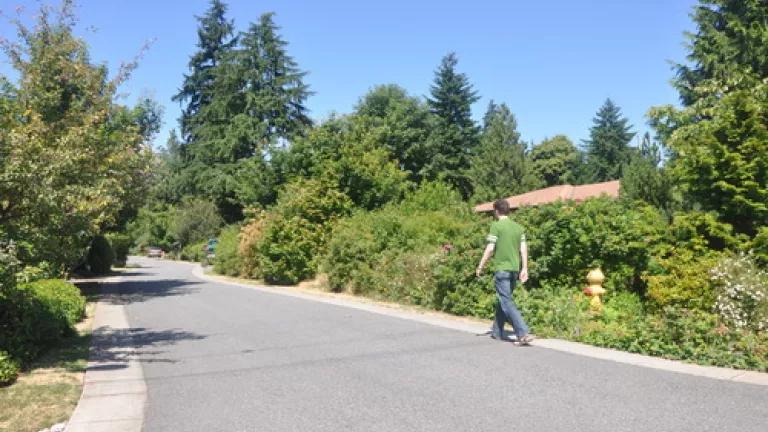New Federal "TIGER" Transportation Grants Direct Some Funding to Green Infrastructure Projects, But More Investment Is Needed

Yesterday the Obama administration announced the new round of TIGER grants, some of which will be used to fund pollution-preventing green infrastructure projects.
Federal agencies award TIGER (Transportation Investment Generating Economic Recovery) grants on a competitive basis to transportation projects aimed at promoting “livability.” This usually means projects that encourage a range of modes of transportation, like transit, biking, and walking.
That's a worthy goal. But as NRDC recommends in our recent report After the Storm, TIGER grants should also give priority to projects that incorporate green infrastructure techniques to control transportation-related stormwater runoff.
- Roadside runoff (photo credit: urbanworkbench)
Runoff from roads and highways pollutes and erodes our water bodies, causing serious health, financial, and environmental consequences. We can prevent these consequences by ensuring that our roadways use runoff controls that capture stormwater before it runs off into water bodies in the first place.
The best way to do this is with a group of techniques called green infrastructure. Using practices like grassy swales, rain gardens, wetlands, and trees planted next to streets, green infrastructure replicates the natural functions of a landscape, reducing the volume of runoff by capturing and managing rainwater where it falls.
Green infrastructure also generates a wide range of economic and social benefits beyond improved water quality. For example, using vegetation to soak runoff into the ground can recharge groundwater supplies, create wildlife habitat, reduce the urban heat island effect, and make communities more beautiful. These are benefits that traditional stormwater controls like curbs, gutters, and sewer pipes just can’t provide.
- Seattle's "SEA Street" green street, which uses roadside vegetation to reduce runoff (photo credit: NRDC)
So, how many of the new TIGER grants were awarded to projects that use these beneficial green infrastructure techniques?
Of the 46 projects funded this year – totaling $511 million in grant funds – only one project explicitly intends to incorporate green infrastructure, with one other project providing stormwater management through techniques that aren’t specified.
- The Syracuse Connective Corridor, a $17 million project conducted by the city of Syracuse, will create a corridor of “complete streets” connecting the Downtown and University Hill areas. As part of the project, green infrastructure will be integrated into these streets. Syracuse has already shown a commitment to green infrastructure, as we detailed in our new report Rooftops to Rivers II, so it’s great to see the city taking advantage of this funding opportunity to put more green infrastructure in the ground.
- The St. Albans Main Street Reconstruction, a $2.7 million project conducted by the city of St. Albans, Vermont, will reconstruct 1,600 feet of the town’s Main Street. Among other things, the project will provide stormwater management, but the project listing doesn’t say whether this will be achieved through the use of green infrastructure.
These two projects are a great start, but the administration needs to invest more federal dollars in green infrastructure projects. Stormwater runoff pollution must be prevented from fouling our waterways and endangering our health, and green infrastructure is a cost-effective way to accomplish this – all while providing a wide array of benefits.
Failing to invest in these techniques, as most of the TIGER grant projects do, wastes a valuable opportunity. We hope to see more TIGER grants directed toward green infrastructure projects in the future.
